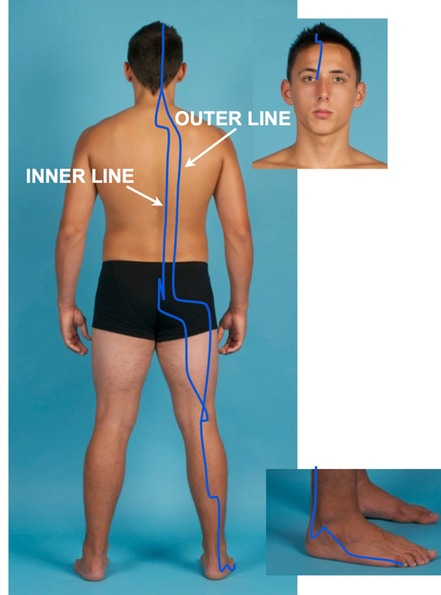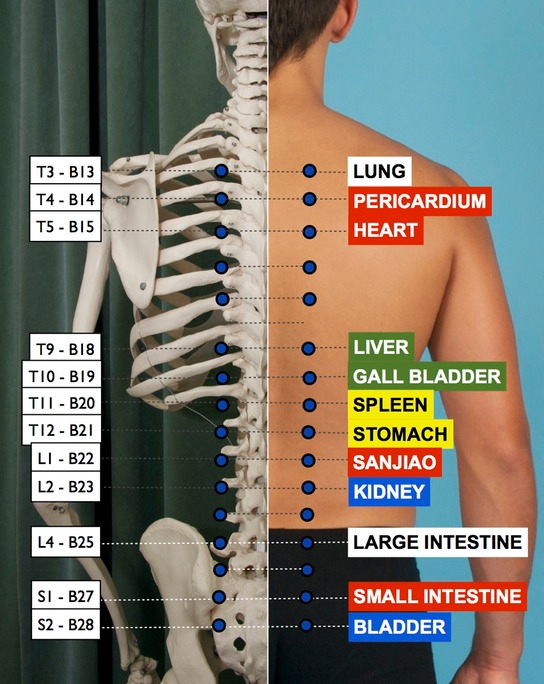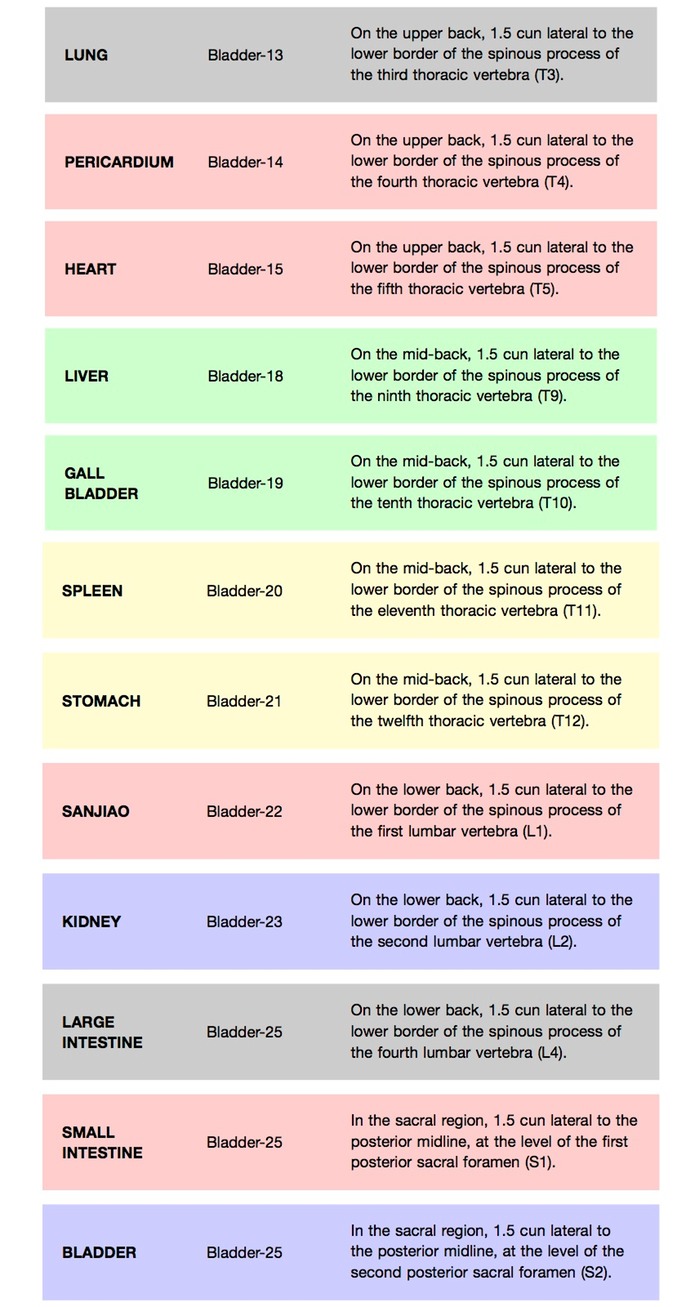On each side of the body, there are two parallel branches of the Bladder meridian (see MERIDIAN PATHWAYS) spanning the length of the spine (see figure below). The branch closer to the spine is known as the INNER LINE and the branch further from the spine is known as the OUTER LINE. The inner line is measured to be 1.5 cun lateral to the spinous processes of the spine. The spinous processes are the most prominent part of each vertebrae and these can be felt by running your finger down the length of the spine - the `bumps' are your fingers passing over the spinous processes. The outer line is 3 cun from the spinous processes. The distance of the inner line from the centre of the spine can be measured either by using the width of the index and middle fingers together (which is 1.5 cun) or more conventionally by taking the distance from the spinous processes of the spine to the medial border of the scapula (the edge of the shoulder blade nearest the spine) as 3 cun and the inner line is then midway between the medial border of the scapula and the spinous processes.

All the Back Transporting Points are found on this inner line, but note that not all Bladder points on the inner line are Back Transporting Points.
There is one Back Transporting Point corresponding to each of the twelve ordinary meridians (see MERIDIAN PATHWAYS) - in fact there are two corresponding to each meridian as there is an identical branch of the Bladder meridian on the left and right side of the body. So there is a Back Transporting point on each side of the body corresponding to the Heart meridian, one corresponding to the Liver, one to the Gall Bladder and so on.
When performing Spinal Reflexology, the Back Transporting Points are our chief tools of assessment and treatment. Palpation of these points acts as a 'window' into what is happening to the Qi in the corresponding meridian - for example, palpating the Back Transporting Point that corresponds to the Gall Bladder meridian will give us some insight into what is happening to the Qi in the Gall Bladder meridian and palpating the Back Transporting Point for Small Intestine will tell us things about the Qi in that meridian, and so on.
We can then use holding techniques on these same points in a bid to resolve any Qi imbalances in those same corresponding meridians - treating the Back Transporting Point associated with the Gall Bladder will, for example, help resolve Qi imbalance in the Gall Bladder meridian. In addition to using the Back Transporting Points, we will use the Great Points (see GREAT POINTS).
The Back Transporting Points are shown below:

This chart shows that the first Back Transporting Point at the top of the spine corresponds to the Liver meridian and that it is act-point Bladder 13 (B13) and this point is level with the third thoracic vertebra (T3). You can see that some of the Back Transporting Points are level with the thoracic vertebrae (T), lumber vertebrae (L) and sacral vertebrae (S).
The precise location of the Back Transporting Points are shown below:
